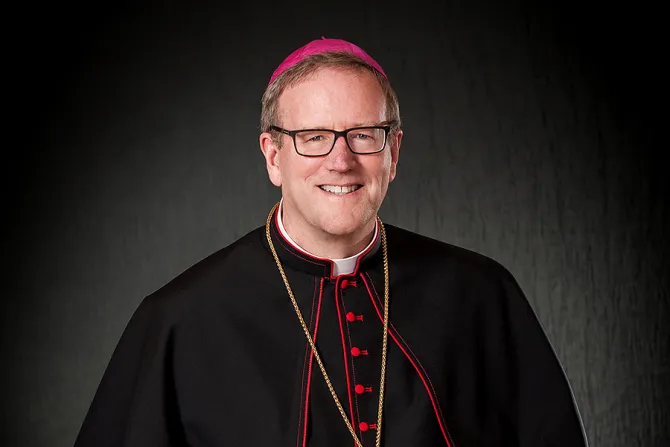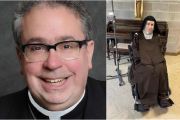That power and edge has been something that's been essential to his "Word on Fire" ministry, which Barron saw as a direct response to "beige Catholicism" - a weak and uninteresting presentation of the faith that he and his contemporaries experienced in the immediate aftermath of Vatican II.
"In many ways there's still vestiges of (that) in our education, our catechesis," Barron said.
"I'm opposed to a dumbed down Catholicism, I don't like a culturally accommodating Catholicism. I like when it's bold and colorful and confident and smart and beautiful, so in that sense, I'm opposed to falling back into beige Catholicism," he said.
In many ways, Barron thinks the Church has turned the corner on "beige Catholicism," especially due to the influence of Pope John Paul II and Pope Benedict XVI.
"Word on Fire comes out of a Vatican II vision of bringing the light of Christ out into the world, reading the signs of the times, using the new media...to move into the new evangelization of John Paul II and company. That's the tradition I'm standing in, from Gaudium et Spes, all the way to Francis in Evangelii Gaudium, that's the tradition I'm exemplifying, I hope," Barron said.
In the book, Barron proposes that the most effective way to evangelize today is to lead with the beauty of the faith.
"There's something more winsome and less threatening about the beautiful," Barron wrote in a 2015 essay quoted in the book. "'Just look,' the evangelist might say, 'at Chartres Cathedral or the Sainte Chapelle, or the Sistine Chapel ceiling, or the mosaics at Ravenna.'"
"'Just read,' he might urge, 'Dante's Divine Comedy or one of Gerard Manley Hopkins's poems, or Chesterton's Orthodoxy.'"
Catholics hoping to learn and draw from what Barron considers to be a canon of great Catholic works of art will not be disappointed - throughout the book, he mentions what he sees as some of the best works of film, literature and art - including many works of American Catholic art - that can be employed to draw people deeper into faith and form them to be better evangelists.
And the need for a renewed desire to evangelize couldn't be more urgent, Barron said.
"Our numbers are shrinking, especially among the young, there's no question about that," the bishop said.
(Story continues below)
Subscribe to our daily newsletter
"People are kind of leaving the Church in droves - for every one person that joins the church, six are leaving, so that's a very discouraging thing."
But rather than draw back in fear, Barron said these disheartening statistics awaken his instincts to "go out, and set the world on fire, and evangelize and do it with confidence."
"Go out with fife and drum to meet the culture," he added, borrowing a phrase from German Lutheran Paul Tillich. "I like that attitude, I like the John Paul II kind of swagger."
Barron said he hopes that his book will do just that - inspire people to learn their faith, and to tell others about it.
For Catholics looking for practical advice on how to be better evangelists, Barron's first recommendation is: "Read."
"Read. Get to know the faith," he said. "Because we have a lot of enemies now who are smart and they're trying to convince people that religious folks are not too smart. And I think people have got to get informed."




